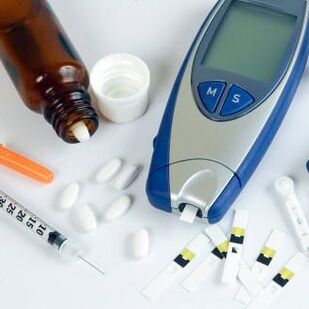
Diabetes Mellitus is one of the most common focuses for increasing the incidence and disease spoil statistics.The symptoms of diabetes appear on the same day, the process flows chronically, with increasing and deteriorating endocrine-exchange disorders.True, the type of type diabetes and differs significantly from the early Stage another.
Among the entire endocrine pathology, diabetes are confidentially holding championships and accounts for more than 60% of all cases.In addition, disappointing statistics indicates that 1/10 "diabetics" are children.
The probability of gaining a disease increases with age and thus, every ten years the number of groups couples.This is explained by increasing the expected life of life, improving early diagnosis, reducing physical activity and increasing the number of people with surplus weight.
Types of diabetes
Many have heard of such a disease as a nonalichest diabetes.So the reader then does not confuse the diseases that have the name "diabetes", probably clarifying their differences will be useful.
Non -alar urethra
Illegal diabetes is an endocrine disease that occurs due to neuroinfections, inflammatory diseases, tumors, utematics and due to insufficiency, and sometimes complete disappearance of adg-vas prepartin (antidihuretic hormone)
This explains the clinical picture of the disease:
- Standing dryness of the oral cavity, incredible thirst (person can drink up to 50 liters of water in 24 hours, stretching the stomach in large size);
- Distribution of huge amounts of unconditional light urine with low specific gravity (1000-1003);
- Catastrophic weight loss, weakness, reducing physical activity, digestive system disorders;
- Characteristic skin change ("parchment" leather);
- Muscular fiber atrophy, muscle habitual weakness;
- Development of dehydration syndrome in the absence of fluid intake for more than 4 hours.
The disease in terms of the complete drug has a negative prognosis, performance is significantly reduced.
Short anatomy and physiology
The non-lire body - the pancreas performs a mixed competent function.Its exogenous part of external excretion, products enzymes involved in the digestive process.Endocrine part, which was entrusted to the Military Secretary Mission, deals with the development of different hormones, includingInsulin and Glucagon.They are key to ensure sugar permanence in the human body.
Endocrine part of the glands represent the islands of Langergan, consisting of:
- Stations occupying a quarter of the entire area of the island and are considered a place of glucagon products;
- B cells occupying up to 60% of synthesizing cells and accumulate insulin, of which the molecule is a polypeptide two chains, which carries in a certain series of 51 amino acids;
- D-cells produced by Somatostatin;
- Cells produced by other polypeptides.
So the conclusion suggests yourself:Damage to the pancreas and the island of Langergan is a special mechanism that inhibits insulin production and initiates the development of the pathological process.
Types and special forms of disease
Lack of insulin leads to breach of sugar constancy (3.3 - 5.5 mmol / l)and contributes to the formation of a heterogeneous disease called diabetes (diabetes):
- Complete absence of insulin (absolute disadvantage) shapesInsulin -depetena pathological process related toType and diabetes (ISD);
- Lack of insulin (relative disadvantage), which runs in the initial phase of breach of carbohydrate metabolism, slowly, but surely leads to developmentInsulin -depetenDiabetes (INZSD), calledType II diabetes.
Due to the violation of the body use of glucose, and, therefore, the increase in blood serum (hyperglycemia), which is in principle, the event manifestation, the signs of the diabetes mellius, ie the overall disorder of metabolic processes at all levels, start to occur over time.
In addition to the diabetes of the first and other species, special types of this disease are abolished:
- Secondary diabetes,The pancreas arising from acute and chronic inflammation of pancreas (pancreatitis), malignant neoplasms in parenchyme glands, liver cirrhosis.Numerous endocrine disorders, accompanied by excessive production of insulinist (acromigalia, kukinga diseases, phoohromocitomes, thyroid diseases) lead to the development of secondary diabetes.Many drugs have long spent diabetogenic effect: diuretics, some antihypertensive medications and hormones, oral contraceptives, etc.;
- Diabetes in pregnant women (gestational),Due to the characteristic mutual influence of mother, child and placenta hormones.The fetal pancreas that produce their own insulin starts slowly insulin products with mother glands, as a result whose special form was formed during pregnancy.However, with proper control, gestational diabetes usually disappear after childbirth.After that, in some cases (up to 40%) in women with a similar history of pregnancy, this fact can jeopardize the development of type II (within 6-8 years).
Why is there a "sweet" disease?
The "sweet" disease forms a pretty "Mitley" group of patients, so it becomes obvious that the ISSD and its insulin-divided "colleague" is a genetic event differently.There is evidence of the association of diabetes of subsidiaries of insulin with genetic structures of the Hlad system (especially the complex of histocoupliness), especially with some genes of the Lokas D-region.For INZD such a relationship is not seen.
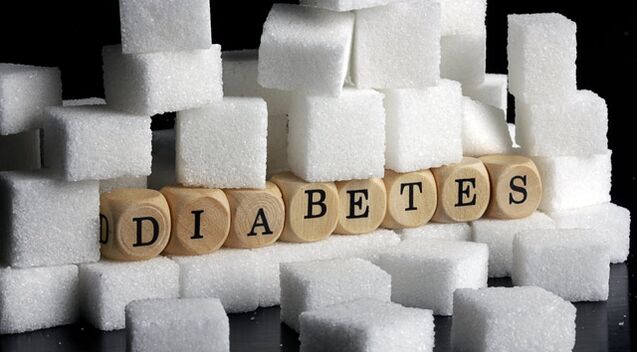
To develop diabetes type type type of type of one genetic predisposition, the pathogenetic mechanism is launched by provoking factors:
- Congenital inferiority of the islet of Langergan;
- Negative impact of external environment;
- Stress, nervous cargo;
- Traumatic brain injuries;
- Pregnancy;
- Infectious processes of viral origin (flu, "pig", cytomegalovirus infection, coxaki);
- A tendency of permanent overeating leading to excessive deposits of fat;
- Abuse of confectioners (sweet tooth risk more).
Before lighting the causes of type II diabetes, it would be recommended to keep yourself at a very controversial question: which more often suffers - men or women?
It was determined that the current disease was more commonly formed in women, although in 19. century SD was the "privilege" of male.By the way, now in some countries of Southeast Asia, the presence of this disease in men is considered overcoming.
The predispositions for type II diabetes development can be credited:
- Changes in the structural structure of pancreas as a result of inflammatory processes, as well as the appearance of cysts, tumors, bleeding;
- Age after 40 years;
- Surplus weight (the most important risk factor for INZD!);
- Vascular diseases due to atherosclerotic process and arterial hypertension;
- In women, pregnancy and birth of a child with high body weight (more than 4 kg);
- The presence of relatives suffering from diabetes;
- Powerful psycho -emotic stress (hypermointed adrenal glands).
The causes of diseases of various types of diabetes in some cases match (stress, obesity, influence of external factors), but the start of the process in the first and second type diabetes is different, moreover,ISSD is a lot of children and young, and insulin-terms prefer the older generation.
Why do you want to drink so much?
Characteristic symptoms of diabetes, regardless of the form and type, can be represented in the following form:
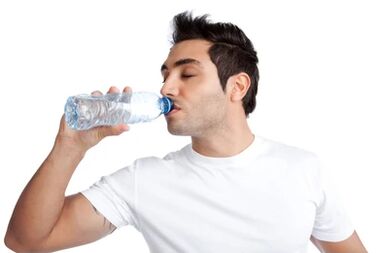
- Dry mudgies oral cavity;
- Thirst, which almost cannot be satisfied, associated with dehydration;
- Excessive urine formation and its edition of the kidneys (polyuria), leading to dehydration;
- Increasing blood serum policose concentration (hyperglycemia), due to sugar disposal control with peripheral tissues due to lack of insulin;
- The occurrence of sugar in urine (glucose) and keton bodies (ketonuria), which are usually present in negligible quantities, but with diabetes Melitus intensively produces the liver.
- Increased blood plasma (in addition to glucose) urea and sodium ions (on+);
- Losing weight, which in the event of a disease deception is a characteristic characteristic of catabolic syndrome, which is developed due to the decline of glycogen, lipolysis (mobilization), catabolism and glucose (glucose transformation) protein;
- Violation of the Lipid spectrum indicator, increasing general cholesterol due to the fraction of small Lipoprotein security, nebital fatty acids), triglycerides.An increasing lipid content begins to actively go to the liver and there is intensively oxidized, which leads to excessive creation of the ketsial body (acetone + β-oxylyic acid + acetouxus acid) and further entering their blood (hypertonynomy).Excessive concentration of ketonary bodies threatens dangerously called stateDiabetic ketoacidosis.
Thus, the general signs of diabetes may be characteristic of any form of disease, however, not to confuse readers, it should still be noticed inherent characteristics in accordance with that type.
Type and diabetes - "Privilege" Youth
ISD is characterized by sharp (weeks or months) beginning.Signs of type diabetes and are also imposed and manifested with clinical symptoms typical of this disease:
- Sharp down weight;
- Non-performance thirst, a person simply cannot be drunk, although he tries to do so (polydypsy);
- A large amount of urine excreted (polyuria);
- A significant excess concentration of glucose and ketone bodies in blood serum (ketoacidosis).In the initial phase, when the patient still does not know of his problems, the diabetics (ketoacidotic, hyperglycemic) communicating, thus insulin therapy is prescribed (only insulin therapy will be prescribed (only insulin therapy will be prescribed (only inInsulin therapy prescribe (only insulin therapy will be prescribed (only insulin therapy).
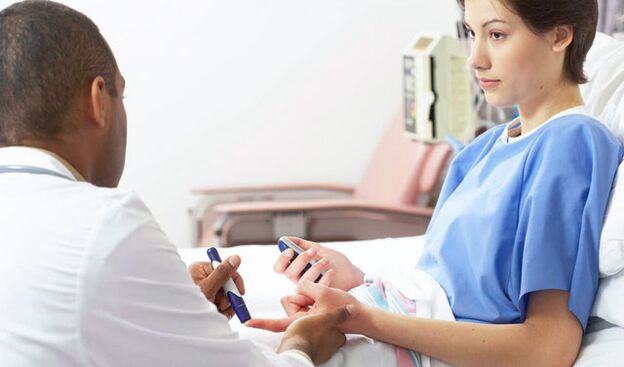
In most cases, after use of insulin are compensated by metabolic processes,The need for the body in insulin decreases sharply, the temporary recovery "comes.However, this short condition of the remission should not be relaxed or a patient or a doctor, because after a while, the disease will be reconnected.The need for insulin as a disease duration can be increased, but basically, in the absence of ketoacidosis will not exceed 0.8-1.0 units / kg.
Signs that indicate the development of late complications of diabetes (retinopathy, nephropathies) may occur in 5-10 years.The main reasons for the Fatal Outcome of ISD include:
- The terminal renal failure, which is the result of diabetic glomerulosclerosis;
- Cardiovascular disorders, as complications of basic diseases, which occur slightly less often renal.
Illness or age changes?(Type II diabetes)
Inzsd develops many months or even years.Problems originated, a person wears various experts (dermatologist, gynecologist, neurologist ...).The patient does not suspect that diseases are different in their opinion: Furunutza, itchy skin, fungal lesions, lower extremity pain - signs of type II diabetes.Patients get used to their condition, and diabetes continue to slowly develop, affect all systems and above all the vessels.
INZSD is characterized by a stable dispute, as a rule, without showing the tendencies of ketoacidos.
The treatment of type 2 diabetes usually starts in accordance with the diet with the restriction of easily digestible (refined) carbohydrates and use (if necessary) to reduce drug medications.Insulin is prescribed if the development of the disease reached the phase of severe complications or there is an immunity of oral drugs.
The main cause of death in patients with INZD is recognized as a cardiovascular pathology that has become a consequence of diabetes.As a rule, this is a heart attack or a stroke.
Products Production of Diabete
The basis of medical measures aimed at compensation for diabetes are three main principles:
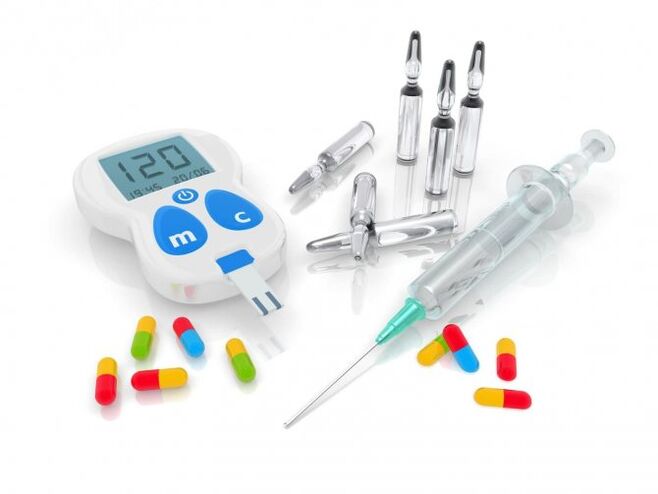
- Fee for insulin deficiency;
- Endocrine disorder regulation;
- Prevention of Melitus diabetes, its complications and their timely treatment.
The implementation of these principles is performed on the basis of 5 main positions:
- Diabetes nutrition is awarded the entertainment of the "first violin";
- The system of physical exercises, adequately and individually selected, goes after the diet;
- Drugs that reduce sugar are generally used to treat type 2 diabetes;
- Izulin therapy is prescribed if necessary with INZD, but it is main in the case of type 1 diabetes;
- Teaching patients for self-confidence (blood-free skills, using a glucometer, insulin introduction without external assistance).
Laboratory control over these positions indicates the degree of compensation after the following biochemical studies:
| Indicators | A good degree of fees | Satan | Bad |
|---|---|---|---|
| Glucose level on an empty stomach (mmol / l) | 4.4 - 6.1 | 6.2 - 7.8 | Ø 7.8 |
| Sugar content in blood serum 2 hours after eating (mmol / l) | 5.5 - 8.0 | 8.1 - 10.0 | Ø 10.0 |
| Percentage of glycosyl hemoglobin (HBA1,%) | <8.0 | 8.0 - 9.5 | Ø 10.0 |
| Serum Total Cholesterol Indicator (Mmol / L) | <5.2 | 5.2 - 6.5 | Ø 6.5 |
| Triglyceride level (Mmol / L) | <1.7 | 1.7 - 2.2 | Ø 2.2 |
Important role of diet in the treatment of INZDD
Diet diabetes is very well known, even far from diabetes for people, Table no.9. Being in a hospital about any disease, then you can hear a special diet that is always in separate pots, and is issued from other diets and is issued after a certain password is uttered: "I have a ninth table."What does it all mean?What is the difference between this mysterious diet of everyone else?
You should not be wrong, watch out for his "porridge" of diabetics that they were deprived of all the joys of life.Diet in diabetes is not so much different from the diet of healthy people, the right amount of carbohydrates (60%), fat (24%), protein (16%) receive patients.
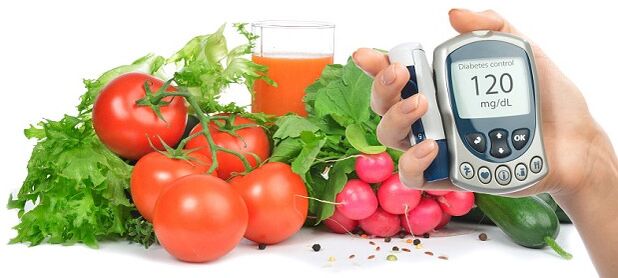
Diabetes power consists of replacing refined sugar in products with slowly divided carbohydrates.Sugar is sold in the store for all and confectionery based on that belongs to the category of prohibited food.
As for the balance of the diet, everything is strict: The diabetic must be sure to use the required amount of vitamins and pectins, which should be at least 40 g.a day.
Strictly single physical activity
Physical activity for each patient is attended individually by attending a doctor, while the following positions are taken into account:

- Age;
- Diabetes symptoms;
- The severity of the flow of pathological process;
- The presence or absence of complications.
Physical activity prescribed by the doctor and performs "WARD" should contribute to "combustion" of carbohydrates and fats, without attracting insulin to participate.His dose, which is necessary to compensate metabolic disorders, noticeably falls, which should not be forgotten, because by preventing the increase in blood sugar, you can get undesirable effect.Adequate physical activity reduces glucose, introduced dose insulin is spoiled, and as a result, reducing sugar levels below permitted values (hypoglycemia).
So,Insulin and physical activity dosing requires very much attention and a thorough calculation,In order to complement each other, do not step together over the lower boundaries of normal laboratory indicators.
Or maybe try folk drugs?
The treatment of type 2 diabetes is often accompanied by the claims of patients with folk drugs that can inhibit the process and as much as possible to dispose of dosing time.
Without viewing the fact that our distant ancestors practically did not know about such a disease, there are folk medications to treat diabetes, but we should not forget thatThe infusions and decoctions prepared from various plants are an auxiliary agent.The use of domestic drugs for diabetes does not release the patient from complying with food, blood sugar control, visiting the doctor and fulfilling all his recommendations.
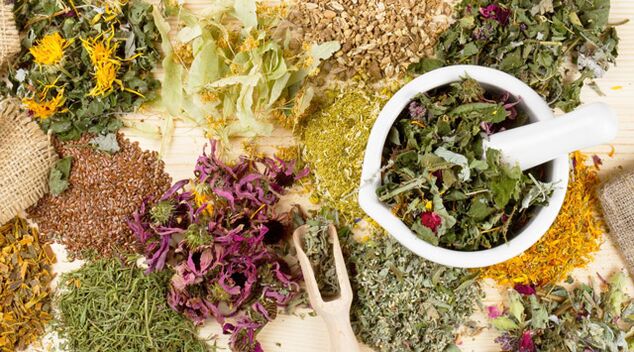
To combat this pathology at home, pretty famous folk drugs are used:
- Leaves of crust and white Mulberry;
- Grains and peeling oats;
- Walnut partitions;
- Leaf bay;
- Cinnamon;
- Žir;
- Honeysuckle;
- Dandelion.
When diets and folk medications no longer helps ...
Thus-theft first generation preparations, widely known at the end of the last century, remained in memoirs, and replaced by new generation drugs that make up 3 main groups of diabetes produced by the pharmaceutical industry.
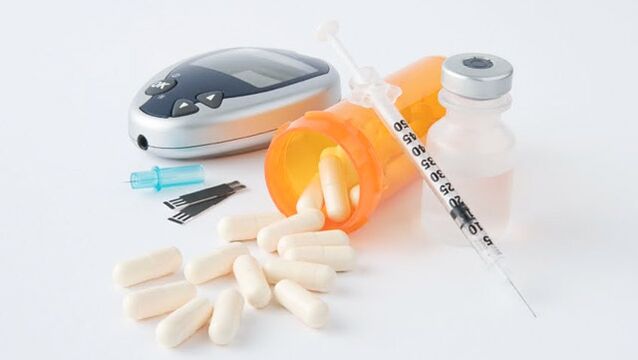
Which funds are suitable for one or other patient - an endocrinologist decides.And so that patients are not self-identified and not decided to use these drugs for diabetes at their discretion, we will give several visual examples.
Derivatives Sulfonylmochevina
Currently, the derivatives of the second generation sulponema, which operate from 10 hours until the day are prescribed.Usually patients take them 2 times a day half an hour before meals.
These medications are absolutely contraindicated in the following cases:
- Type 1 diabetes;
- Diabetic, hyperosmolar, lactacidotic coma;
- Pregnancy, childbirth, breastfeeding;
- Diabetic nephropathy, accompanied by damaged filtration;
- Hematopoic system diseases with simultaneous reduction in white blood cells - leukocytes (leukocytopenia) and thrombocyte hematopoiesis link (thrombocytopenia);
- Heavy infections and inflammatory lesions of the liver (hepatitis);
- Diabetes complicated by vascular pathology.
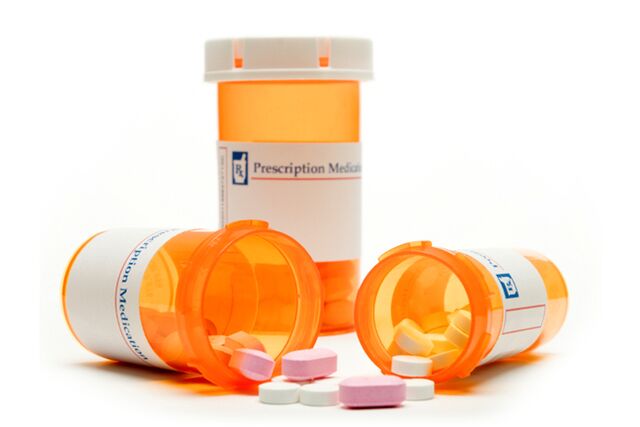
In addition, drug use of this group can jeopardize the development of allergic reactions that are manifested:
- Itching and urticaria, sometimes reaching the EDU Quincke;
- Digestive system disorders;
- Changes from the blood side (decrease in platelet and leukocyte levels);
- Perhaps a violation of the functional liver abilities (jaundice for cholestas).
Sahabro-Whinning Family Equipment Bigaanides
Biguanides (Gunidin derivatives) are actively used to treat type 2 diabetes, often adding sulfonamides.They are very rational for the use of patients with obesity, however, people who have liver, kidneys and cardiovascular pathology are sharply restricted, crossing the thrift medications of the same group or α-glucoside that inhibited carbohydrate absorption in a thin hose.
Absolute contraindications of the use of Biguanide were considered:
- ISD (type 1 diabetes);
- Significant weight loss;
- Infectious processes, regardless of localization;
- Surgical interventions;
- Pregnancy, childbirth, breastfeeding period;
- COMA States;
- Liver and kidney pathology;
- Oxygen glass;
- Microaganiopathy (2-4 degrees) with vision impairment and kidney function;
- Trophic sores and necrotic processes;
- Violation of blood circulation in lower extremities due to various vascular pathologies.
Insulin treatment
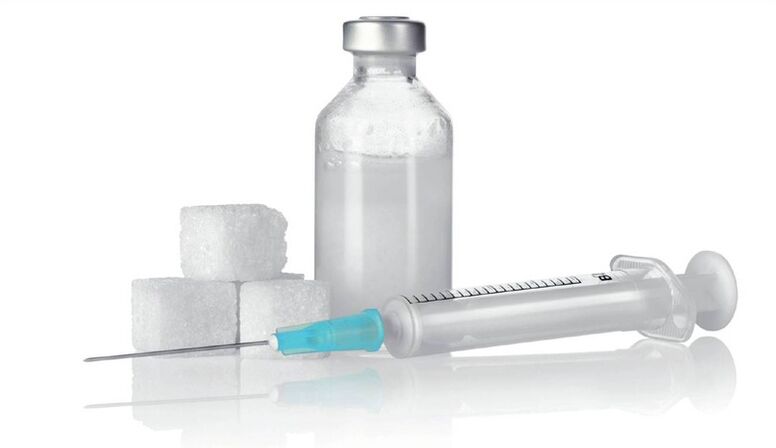
From the above, the fact that the above becomesThe use of insulin is the main treatment of type 1 diabetes, all emergency conditions and heavy complications of diabetes.INZSD requires the appointment of this therapy only in cases of insulin patterns, when correction by other means does not give proper effect.
Modern insulini, named mononimpetent, represent two groups:
- Monocompemable pharmacological forms of human insulin substance (semi-synthetic or DNH-ROCombinant), which, undoubtedly, have a significant advantage in relation to pork preparations.They practically have no contraindications and side effects;
- Monocompemble insulini obtained from pig pancreas.These drugs compared to human insulin require an increase in the dose of the drug by about 15%.
Diabetes are dangerous complications
Due to the fact that diabetes accompanied by the damage to many bodies and tissues, its events can be found in almost all Telexic systems.Diabetes Foundations are considered:
- Pathological changes in the skin: Diabetic dermopathy, lipoid necrobiosis, furunculosis, xant, fungal skin lesions;
- Boning diseases:
- Diabetic osteoarttropathy (common joint - ankle joint), which occurs on the background of breach of microcirculation and trophic disorders, accompanied by dislocations, subtrumes that preceded the formationdiabetic foot;
- Diabetic hypopathy, characterized by a stiffness in the joints of the hands, are more often formed in children with children's diabetes;
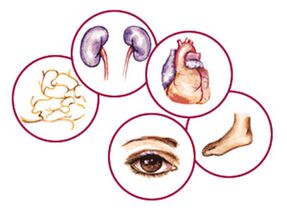
- Respiratory diseases: DugorExtended bronchitis, pneumonia,Increasing the frequency of tuberculosis development;
- Pathological processes that affect digestive authorities:Diabetic enteropathyaccompanied by increased peristalsis, diarrhea (up to 30 times a day), reducing body weight;
- Diabetic retinopathy- one of the most serious complications characterized by damage to visual authorities;
- The most common complications of diabetes is consideredDiabetic neuropathyand his diversity -PolineuropathyReaching 90% of all forms of this pathology.Often found diabetic polyneuropathy isDiabetic foot syndrome;
- The pathological condition of the cardiovascular system, in most cases, is the cause of death of diabetes melitus.Hypercholesterolemia and vascular atherosclerosis, which with diabetes, will be developed in the youth and blood vessels (Coronary heart disease, heart failure, heart failure, heart failure, cerebrovascular damage).
Prevention
Diabetes prevention measures are built on the basis of the cause of its defiance.In this case, it is advisable to talk about the prevention of atherosclerosis, arterial hypertension, including a fight with excess weight, bad habits and food addiction.
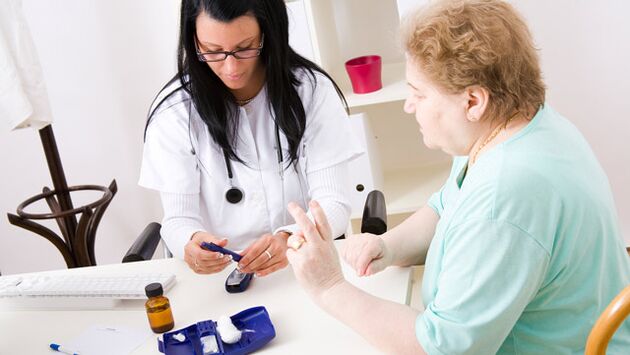
Prevention of diabetes complications consists in preventing the development of pathological conditions arising from the diabetes themselves.Correcting glucose in blood serum, compliance with nutrition, adequate physical activity, the implementation of doctor's recommendations will ensure that the consequences of this quite major disease will be encouraged.



















